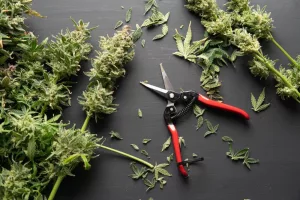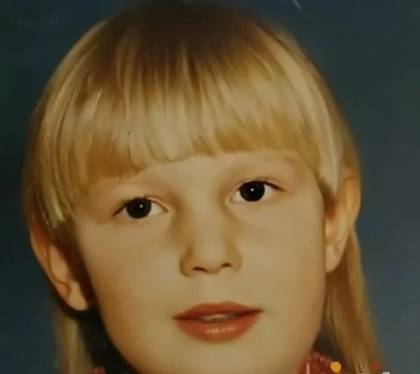English

Each cannabis plant requires special care. Paradox by Nukaseeds is no exception. We use so-called training methods for this care. So you train your plant for a specific purpose. What are the basic ones and then which one to use? We’ll tell you right away.
Fimming
The name is based on the phrase “Fuck, I missed”. This training method was discovered by accident, as you can tell from its name. In practice, instead of making a fine cut as in the previous technique, you cut the crown right at the crown, not under it. The response to this is to move energy to the lower levels of the cannabis plant, which will strengthen its structure.
If you want to try this, simply take a pair of scissors and cut the crown in the first third of the crown.
Super-cropping
If you want to push your plant to the limit, this is the technique for you. It involves putting the plant under a lot of stress, literally breaking off parts of the plant. If you do it correctly, you will hear a soft crackle or crunch. The outer wall of the plant is disturbed and you can feel it between your fingers. This will go smoothly for a plant with a fine texture, but if the cannabis plant is more woody, the “breaking” will be a bit stiff. On the other hand, you can bend it or twist it in all sorts of ways, which will get a response as well.
Tie and bend
There is no serious damage to the structure of the plant in this method of training, so it is a less stressful technique. You are simply bending and tying the individual branches to make them grow in a different direction than is naturally given. You bend the individual parts downwards. The plant then transfers energy to other branches to form a crown. If you plan carefully, you can achieve a dense structure just by manipulating the branches.
Scrogging
The word comes from the abbreviation ScrOG – screen of green. In this method, you use mesh, or something that resembles a grid, and place cannabis plants over your plants. The principle is that once your plants reach the border of this net, you use bending to guide them into the green screen.
You use this technique versus the others later. You have to wait until your plants have reached the necessary size at the growing stage to reach the net. Once all the plants are in the net, as with just bending, you try to control the direction of growth.
Prunning
Removing excess foliage and lower branches is something every grower should consider. Most importantly, do it at the right time. Cannabis plants use their energy and nutrients to support the growth of all their parts. So you should know which parts of the plant are less productive and when to get rid of them. All you need is a pair of sharp, clean scissors and start gradually cutting off the lower leaves and twigs that are pulling nutrients for your flowers.
You should remove 60-70% of both leaves and branches from the bottom. You don’t have to worry about losing anything. The redistribution of nutrients and energy will now be directed mainly to the upper levels. This will support the main crown for the flowering stage. After removing the lower tiers, check where the new shoots are starting to grow.
Main-lining
This method is sometimes more challenging than traditional, less stressful techniques. The emphasis here is on perfectly symmetrical growth. The principle is that you remove the top and all the foliage from the lower floors, resulting in a bare stem. This creates two completely new and identical shoots. Your plant will then resemble the shape of the letter ‘Y’. If you then pull these shoots down and tie them off, you will get a “T” and this is the position you want to get to.
Strip and Flip
In this drastic method, you cut everything that grows from the crown downwards. And that’s before the flowering stage. That way, you redirect all the energy towards the flowers above. The overall combing is really harsh and it’s not for everyone. “I’m not going to do this to my plant after growing it for so long” – this is probably what comes to mind when you think about it. But as harsh as this training method is, it really works. The plant structure may be “lean”, but by the flowering stage you’ll have one big, cone-studded stalk.
So, here’s a list of uniform methods you can use. Which one you choose and what exactly you expect from the plant is up to you. One piece of advice – think things through and don’t go to unnecessary lengths to avoid ruining your plants.
Anyway, you need Paradox for all this. You’ll find it in our offer.
Published by Jan Veselý
28/05/2021choose and buy cannabis seeds from our offer
our pleasure
























